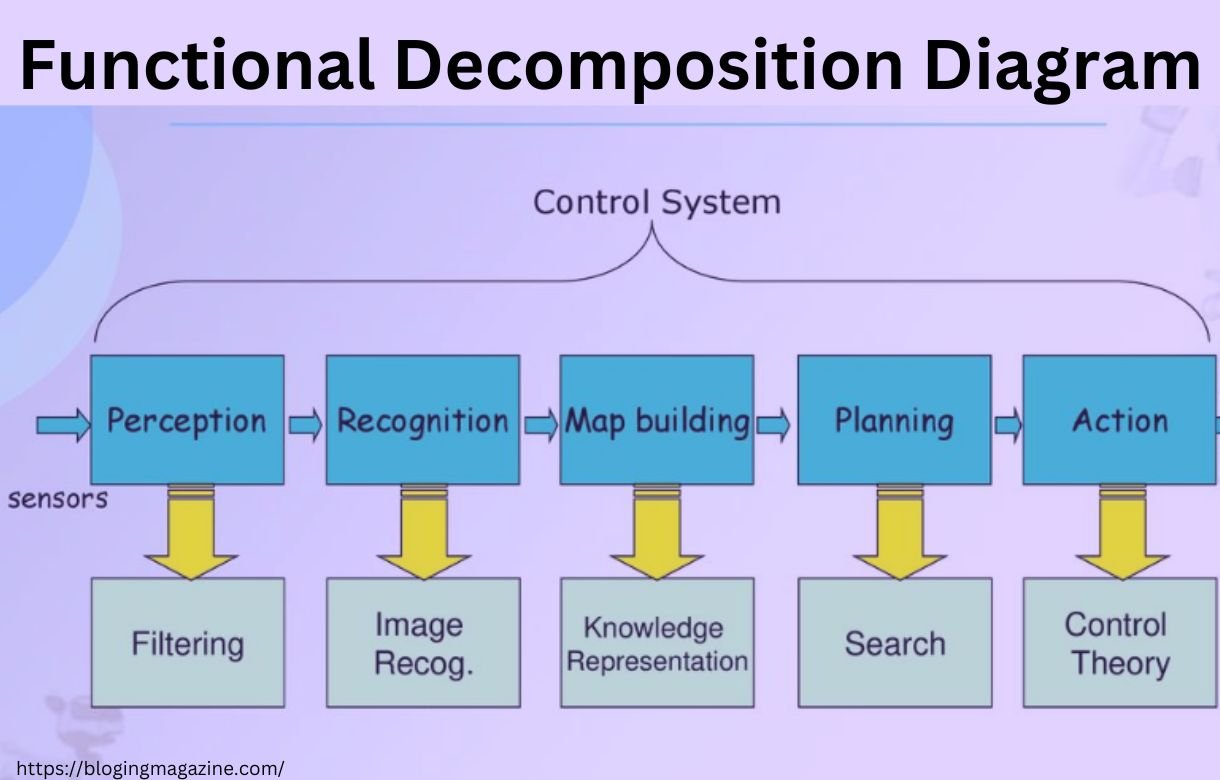A Functional Decomposition Diagram (FDD) is a powerful tool used in systems engineering, business process modeling, and software development. It breaks down complex processes or systems into more manageable and understandable sub-processes or components.
By decomposing functions into smaller parts, it becomes easier to understand, analyze, and manage the system or process.
What are Functional Decomposition Diagrams?
A functional decomposition diagram is a popular diagram used to show the distinct components of a process and their hierarchical relationship to one another. The procedure is depicted in the diagram, which is displayed top-down.
The main function or task and all essential sub-functions or tasks required to accomplish the main goal are shown in a functional decomposition diagram.
Components of a Functional Decomposition Diagram
The following are the key components of a Functional Decomposition Diagram:
1. Top-Level Function
The top-level function is the starting point of a Functional Decomposition Diagram. It represents the overall system, process, or function that needs to be broken down into smaller components.
This is usually a broad, high-level function that encompasses the entire scope of the system or process under consideration. For instance, in a business process, the top-level function could be “Order Processing.”
2. Sub-Functions
Sub-functions are the next level of decomposition, representing the major functions or components that contribute to the top-level function.
These are derived by breaking down the top-level function into smaller, more specific actions or processes. Each sub-function should represent a distinct part of the overall function.
For example, if the top-level function is “Order Processing,” sub-functions could include “Order Entry,” “Payment Processing,” and “Shipping.”
3. Further Decomposition (Lower-Level Functions)
Lower-level functions represent the further breakdown of sub-functions into even more detailed processes or tasks. This step can be repeated as many times as necessary until each function is sufficiently detailed to be understood or managed.
The goal is to reach a level where each function is atomic, meaning it cannot be further divided without losing its meaning. For example, the “Payment Processing” sub-function might be broken down further into “Credit Card Authorization,” “Invoice Generation,” and “Payment Confirmation.”
4. Hierarchical Structure
The hierarchical structure is a crucial component of a Functional Decomposition Diagram. It visually represents the relationship between the top-level function, sub-functions, and lower-level functions.
The diagram is typically laid out in a tree structure, where each level of decomposition is represented by a new branch. The hierarchical nature helps in maintaining a clear and organized view of how complex functions are related and how they contribute to the overall system.
This structure ensures that all components are accounted for and that there is no overlap or redundancy in the functions.
Applications of Functional Decomposition
Applications for functional decomposition can be found in many fields, including signal processing, database theory, systems engineering, software architecture, machine learning, and knowledge representation.
In practical terms, functional decomposition refers to the method by which engineers dissect a device, process, or system’s function into its constituent parts.
Following the analysis, a functional decomposition diagram will be created, which will show the relationships between the various tasks, functions, and subtasks. In addition to addressing potential issues, the graphic might also offer solutions.
Programming is one area where functional decomposition is particularly crucial. After a design has been drawn, the programmer can start coding, working on the most fundamental parts before developing the application.
Functional decomposition aids in streamlining and simplifying the programming process as a result. Functional decomposition does have certain drawbacks, though, including the potential for significant labor and time expenditure.
Why Would You Need a Functional Decomposition Diagram?
An effective tool for comprehending complex systems, determining system functions, and displaying a system’s hierarchical structure is a functional decomposition diagram.
This diagram can help with system analysis, design, and decision-making processes by dissecting a system into smaller, more manageable components.
It also facilitates stakeholder communication and gives a concise summary of system capabilities, which makes it a vital tool for project management and system development.
Conclusion
Functional Decomposition Diagrams are invaluable for understanding and managing complex systems and processes.
By breaking down a top-level function into sub-functions and lower-level functions, and organizing them in a hierarchical structure, these diagrams provide a clear and organized view of the entire system or process.
This not only facilitates better understanding but also aids in effective decision-making, process improvement, and system design.





